This brief examines China’s energy trade trends shaped by carbon neutrality, energy security and import diversification goals.

Introduction
The global energy security landscape will evolve dramatically in the next few decades. China’s demand for imported fossil fuels will remain strong until 2040—but then decline in pursuit of carbon neutrality by 2060. Diversifying sources will be a crucial concern while imports remain high. Leveraging its tech leadership and manufacturing heft in solar panels, EVs, and more, China will achieve low-carbon energy security over time and may even guarantee that of other nations. It will remain reliant on the global supply chain for materials and components.
Energy security has been on the lips of PRC policymakers since the 1990s when the country became a net importer of oil and petroleum products. Three decades later, the situation has only become more urgent: China is now the world’s biggest importer of fossil fuels (coal, oil and natural gas). A multi-pronged strategy is being deployed to deliver energy security: opening new coal mines and oil/gas fields, boosting energy efficiency, diversifying import sources, reforming energy markets, shifting to renewables, etc.
As Beijing strives for carbon neutrality (see CEB November 2021 ‘China sprints to a green future’), the prime concern will shift from securing fossil fuel imports to sourcing raw materials and inputs for green energy infrastructure: solar panels, batteries, and so on.
Framed against the decoupling of China and the West, clean energy will likely remain a heavily interdependent field. Critical tech exports face further curbs to protect commercial advantage, but barring extreme provocation, trade in clean energy materials and products should continue. The global clean energy transition would otherwise grind to a standstill. Case in point: some 50 percent of the lithium needed for PRC battery manufacturing comes from Australia.
Virtually every new solar panel on the planet is, wholly or in part, made in China. Global concerns about subsidies to PRC firms may be easing; the Biden administration relaxed (without entirely rescinding) Trump-era tariffs on Chinese solar panels in February 2022.
China Executive Briefing | China Energy Policy Amid Geopolitical Turmoil
June 2, 2022 — Columbia University’s Dr. Erica Downs, International Society for Energy Transition Studies’ Dr. Xiansheng Sun, and Australian National University’s Jorrit Gosens examine China’s energy needs and policies. Kate Logan of the Asia Society Policy Institute moderated the conversation. (49 min., 39 sec.)
managing macro energy policy
Authority over energy policy (see chart below) has evolved, reflecting a decades-long shift from managing the sector resource-by-resource to energy supply as a whole.
When the PRC and its planned economy were largely closed off to the world (1950s to 1980s), coal, oil, hydropower and electricity operated in separate ministerial silos. These were abolished or converted to state-owned energy conglomerates in makeovers overseen by SASAC (the new State-owned Assets Supervision Commission) between 1980 and 2010. The new bodies were tasked both with domestic supply and imports.
Macro energy strategy is set by NDRC (National Development and Reform Commission), a ‘super-ministry’ responsible for the PRC’s economic planning. The NEA (National Energy Administration), set up to oversee the nation’s energy system, takes charge of sector-specific policy and implementation. Over the last decade, as the overlap in climate and energy governance expands, the mandates of environmental agencies have crept into the energy sector; they are now charged with managing the nation’s emissions trading scheme, energy-efficiency upgrades and more.
chart 1: major energy and climate policy institutions
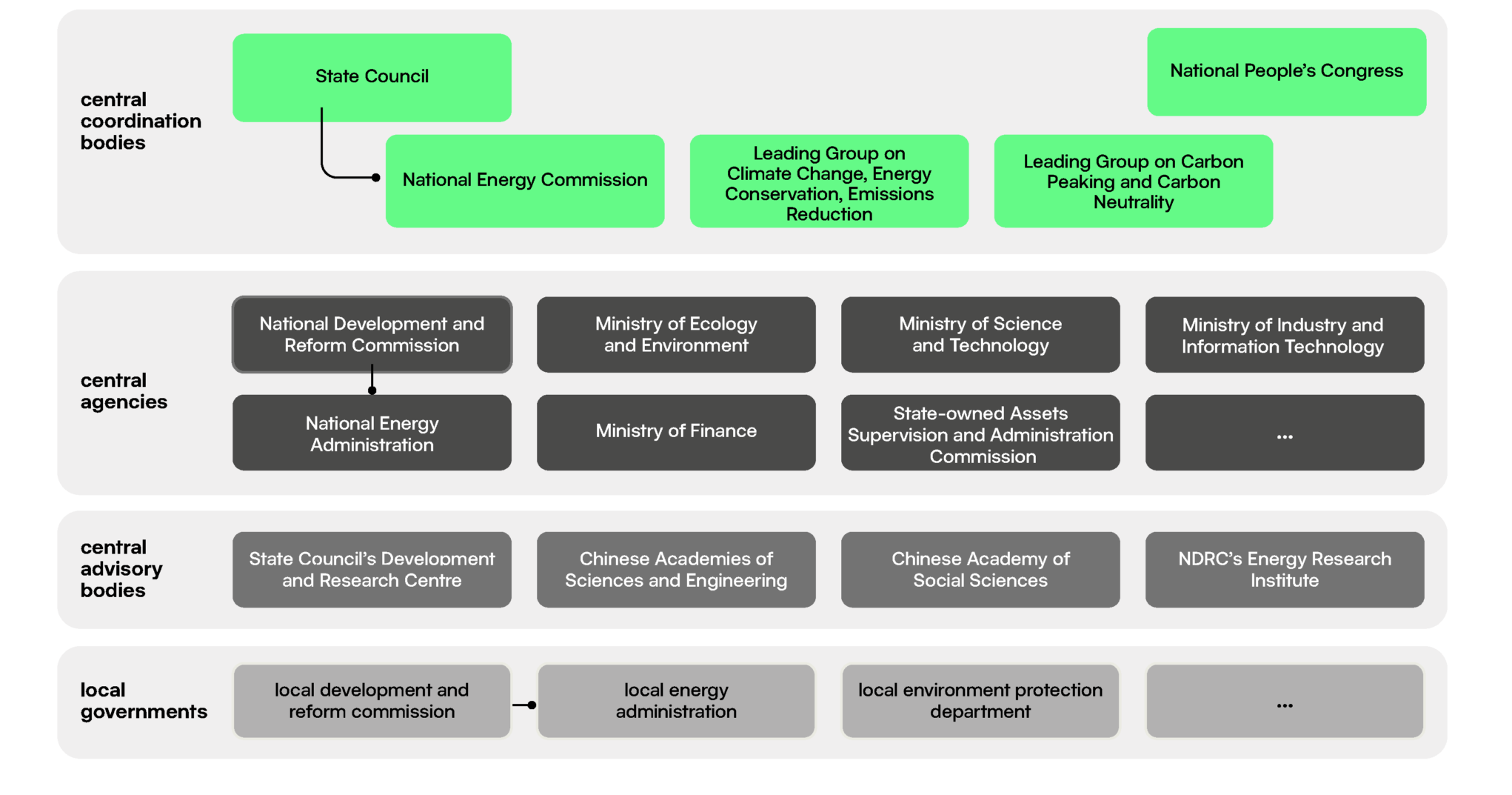
energy trade in the fossilised era
PRC demand for imported fossil fuels will remain strong over the next two decades. Coal, oil and gas will still be in use right through to 2060, albeit by then in minute quantities, even in the most optimistic scenario. Beijing’s insistence on preserving a solid domestic manufacturing base makes natural emissions reduction pathways—e.g. shifting from energy-intensive industry to services—less relevant to China than to other economies. The adoption of CCUS (carbon capture, usage and storage) will be inevitable.
coal: to provide backup power to 2060
Coal consumption will keep growing until 2025 at 1 percent p.a. on average, then plateau and slowly decline towards 2060. The carbon-heavy fuel will remain integral to China’s energy system for years to come, as alternatives are not, as yet, affordable for industries like steel and cement.
The PRC is rich in coal resources: over 90 percent of the coal it consumes is mined on home soil. A 2020–21 boycott of Australian anthracite barely nudged total supply. Despite ample coal endowments, conflicting policy goals (decarbonisation, energy security, etc.) and inefficient markets can create headaches, like the huge electricity shortages in 2021.
Domestic supplies were, anyway, beaten by imports in cost and quality terms until recently. Raising the competitiveness of domestic coal is now Beijing’s aim, as it rationalises and automates mining, while controlling downstream demand by pricing carbon and tightening fuel use standards.
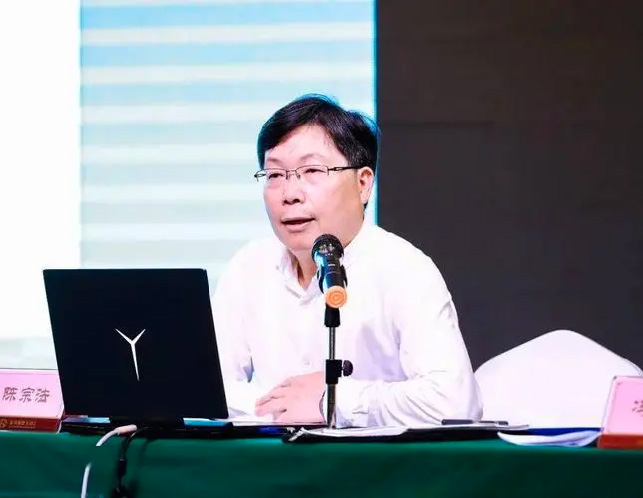
Chen Zongfa 陈宗法
China Energy Research Society director
Coal-fired power faces gloomy prospects in the PRC, warns Chen, but will survive for another four decades before its ultimate phase-out by 2060. Capacity will grow slightly in coming years, he estimates, but peak around 2030. Its role too is changing: instead of providing baseload power as before, it will, he notes, transition to a flexible backup role, bolstering the power system as renewables come to the fore. Yet, policy support and power market reforms are failing to keep up, he laments.
Concurrently deputy general counsel at Huadian, a central SOE with massive coal power investments, Chen is an industry veteran.
gas: a stopgap transition fuel
Deemed a ‘transition fuel’, natural gas is a big winner from Beijing’s carbon neutrality pledge. It plays an ever more critical role in power system regulation, central heating, transport and industry. Demand will grow by an average of 3.5 to 5 percent p.a. up to 2025, reaching 430 to 450 bcm, and plateauing at 550 to 700 bcm in 2035–40. This suggests a 48 to 88 percent increase from current levels.
Pricing needs a drastic makeover, warn industry insiders: upstream supply is an oligarchic troika, distribution suffers from inefficient pipeline networks, state-set prices constrain downstream power/heating plants, and other demand sources are fragmented.
The PRC lacks domestic sources of natural gas: over 40 percent is imported. It overtook Japan as Australia’s largest LNG customer in 2021, buying 30.7 Mt at the cost of some A$16 billion. Yet the imperative of diversifying imports suggests Beijing will look for a range of suppliers. Australia has been a major supplier since 2006, following the signing of the first of a series of supply contracts. Most demand is along the east and south coasts, served by LNG tanker deliveries.
For the 14th 5-year plan (2021–25), PRC producers will further explore and develop domestic gas fields, but they alone will not be able to satisfy growing incremental demand.
Holding an oligopoly over the PRC oil and gas sectors, central SOEs Sinopec, PetroChina/CNPC (China National Petroleum Corporation) and CNOOC
(China National Offshore Oil Corporation) are collectively known as the ‘three barrels of oil’ in Chinese.
Sinopec and PetroChina rank as the number one and two largest oil companies in the world; their businesses are concentrated in the downstream refining and upstream production sectors respectively. CNOOC is slightly smaller and, as its name suggests, focuses on offshore oil production.
As for imports, CNOOC is China’s largest LNG importer and will take responsibility for meeting growing domestic demand in years to come. PetroChina is responsible for pipeline imports of natural gas.
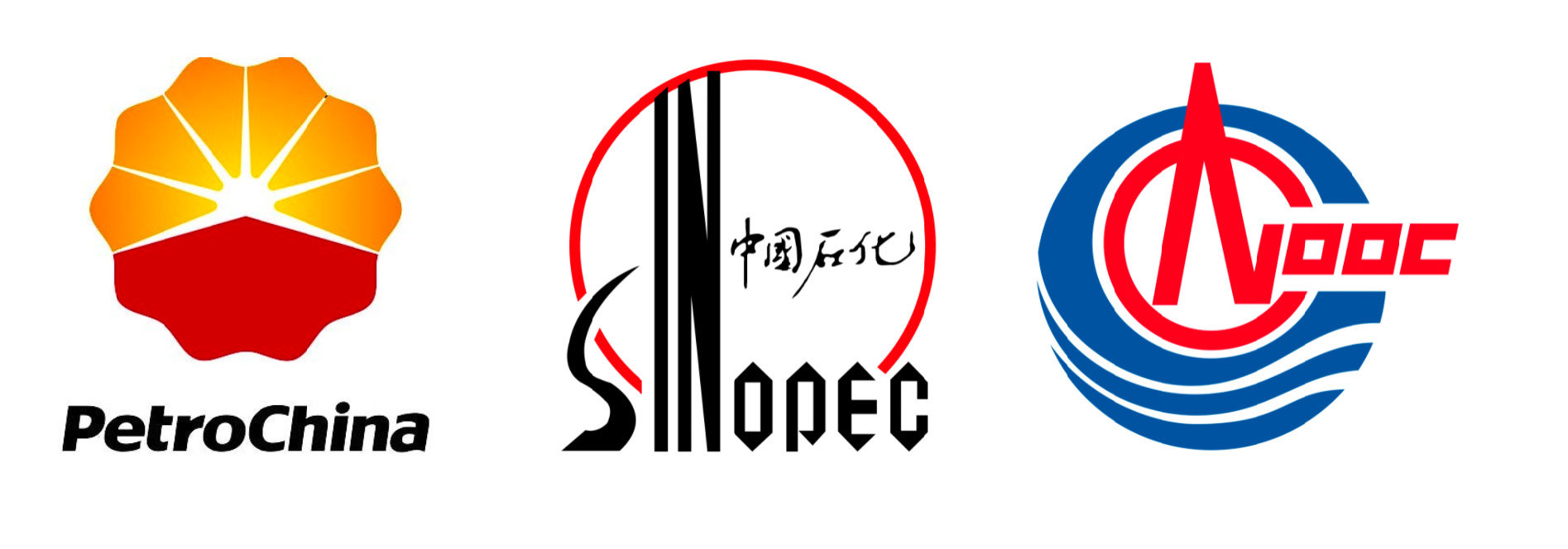
‘three barrels of oil’ 三桶油
oil: imports fall with rise of EVs and alternative fuels
Weaning itself off imported oil, accounting for over 70 percent of its oil consumption, is a major priority for the PRC. Demand keeps rising but is slated to peak around 2026-30, between coal (roughly 2025) and gas (2035–40). The explosive growth of EVs (see below) and alternative fuels for transport are prime factors; its use in heavy industry feedstocks is also mooted to shrink with transition to higher-value-added manufacturing. After two decades of growth, crude oil imports saw an initial decline in 2021: PRC oil giants had some success in exploration, and independent refineries reliant on imported oil suffered crackdowns.
chart 2: coal, oil and natural gas import reliance, 2020
Largest sources:
| Coal | Oil | Natural gas |
| 1. Indonesia | 1. Saudi Arabia | 1. Australia |
| 2. Australia | 2. Russia | 2. Turkmenistan |
| 3. Russia | 3. Iraq | 3. Russia |
| 4. Philippines | 4. Brazil | 4. United States |
| 5. Mongolia | 5. Angola | 5. Qatar |
China-Russia gas trade: uncomfortable partners
Gas imports from Russia will increase somewhat, but dependence will be avoided. Despite a new long-term piped gas deal being inked in February 2022, the reality is complicated—less by the war in Ukraine than by Beijing-Moscow negotiations, ongoing since the 1990s when China became a net importer of fossil fuels.
On the surface, it should be a win-win: as relations with the West become fraught and within the Middle East unstable, Beijing seeks to diversify sources; Russia needs new markets as Europe, sanctions aside, weans itself off fossil fuels. But three factors significantly limit trade
- the strategic imperative of non-reliance on any one country suggests Russian gas trade has a ceiling
- unlike LNG, Russian gas reaches China via pipelines that are expensive to build and need to be profitable over decades; yet PRC gas demand is scheduled to wane after 2040
- pipeline route negotiations have proven a logistical nightmare for both sides (see map)
map: existing and proposed gas pipelines between China and Russia

The most cost-efficient option for Moscow is to link up its gas-rich sites in the northwest with PRC’s gas infrastructure in China’s northwest (route A) or north via Mongolia (route B). However, Beijing sees declining prospects for its economically backward northwest/north, while passage via a third country would add yet another source of risk. Settled so far are the ‘Power of Siberia’ and ‘Far Eastern’ routes (C and D, respectively) from Russia’s eastern and far eastern gas fields—poorer than those in the north but adjacent to China’s northeast population centres.
Export growth cannot, in any case, happen overnight. As almost all Russian gas is piped, there is only room for minor growth; ramping up supply will take years. Networks in the west that supply Europe with Russian gas are thousands of kilometres from those that supply China: rerouting gas from one market to the other is not straightforward. Sino-Russian trade is also affected by US sanctions. PRC banks reportedly paused financing for Russian commodity purchases in late February.
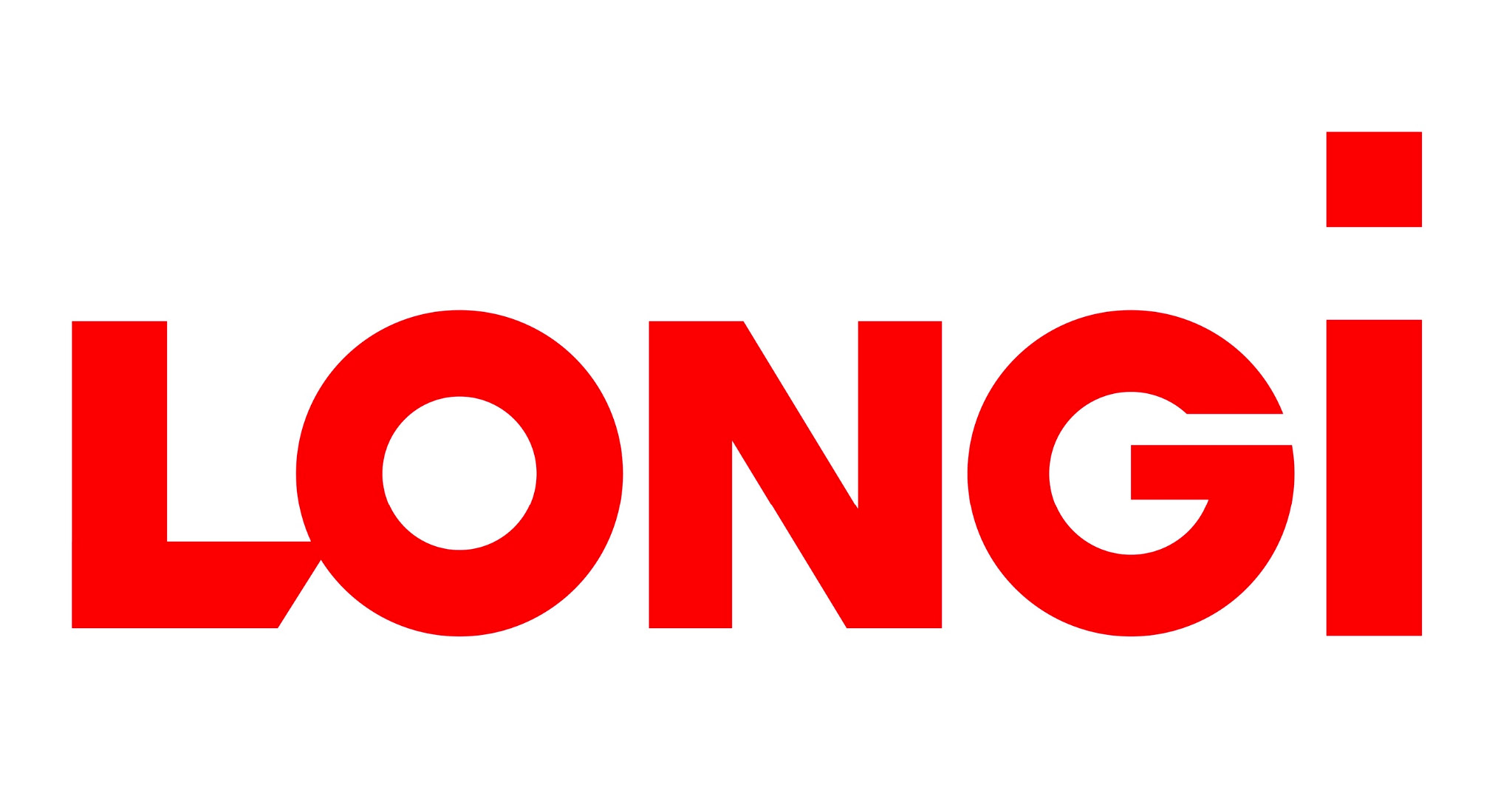
LONGi 隆基
Founded in 2000, LONGi was crowned the world’s largest solar PV firm in 2020, by both market value and sales revenue. Annually, its factories can churn out 105 GW, 38 GW and 65 GW of wafers, cells and modules, respectively. LONGi’s modules are the most advanced in the world, boasting power conversion efficiency of 25.2 percent—close to the theoretical PV efficiency ceiling of around 29 percent. LONGi smashed records by exporting some 25 GW of modules in 2020, capturing 19 percent of the global market.
Venturing into hydrogen in 2021, LONGi hopes to leverage its solar expertise to refine solar-powered green hydrogen tech, a beachhead to the nascent hydrogen industry. With overseas production bases in Malaysia and Vietnam, as well as one planned for India, LONGi envisages its overseas production capacity expanding, not least to avoid import tariffs targeted at Chinese solar exports.
guaranteeing future energy security
The PRC is bent on decarbonising via renewables, hydrogen and other emerging technologies between now and 2060. Energy security will rest on homegrown tech solutions and cheap renewable energy, impervious to the global price swings of fossil fuels. Now keenly competitive in producing low-cost, technologically advanced energy equipment, Beijing deems keeping its manufacturing edge a ‘patriotic imperative’. Domestic demand is a baked-in advantage: the PRC is now the biggest market for solar and wind installations, EVs and other green tech.
Coming from the top leadership, the PRC’s net-zero pledge redraws global trade patterns. World-class low carbon industries will, via exports, lay paths for many other countries’ carbon neutrality campaigns. At the same time though, reliance on global supply chains for materials and components cannot be willed away.
solar panels: critical to global energy security
It’s no overstatement that global energy transition depends on photovoltaics. Early to commercialise research from Australia’s University of New South Wales, the PRC now dominates world production. Its manufacturing might is on display: hefty subsidies, economies of scale and waves of consolidation add up to formidable solar production capacity. Their cost plunging over the last decade, cheap PRC-made solar panels flooded the market. Given lavish state support and intense competition, producers have mastered tech leadership and captured most of the value chain. Barring miracle tech breakthroughs, international manufacturers will not catch up: worldwide net zero pledges can only be achieved using solar panels made in China.
wind turbines: keep on turning
Wind turbines tell a similar story, though lower tech barriers mean costs have not declined on the same scale. Nor are the advantages over international competitors as sizable. But the point is that the PRC renewables sector does not lack technology or manufacturing capacity. Domestically, what it really needs is a power market that reflects renewables’ superiority to fossil fuels; this is a work in progress.
electric vehicles: subsidies go pedal to the metal
EVs are another piece in the green transition puzzle. Hundreds of billions in subsidies having been pumped into the sector, PRC-based automakers are now reaping the benefits. The EV market took off in 2021. Domestic brands SAIC, BYD, Li Auto and Nio took up a lion’s share of the market, the remainder left to PRC-made Teslas, inverting foreign automakers’ age-old dominance. Led by EVs, auto exports shot up in 2021, though still trail far behind conventional players from Germany, Japan and the US. With liberal state support, Chinese EV producers may well soon compete with the big players, from regular cars to commercial vehicles and luxury options. Bringing low-cost EVs to global markets will be a game-changer.
chart 3: China’s primary energy demand by fuel in the next four decades, assuming China is to peak CO2 emission by 2030 and achieve net zero by 2060
source: International Energy Agency
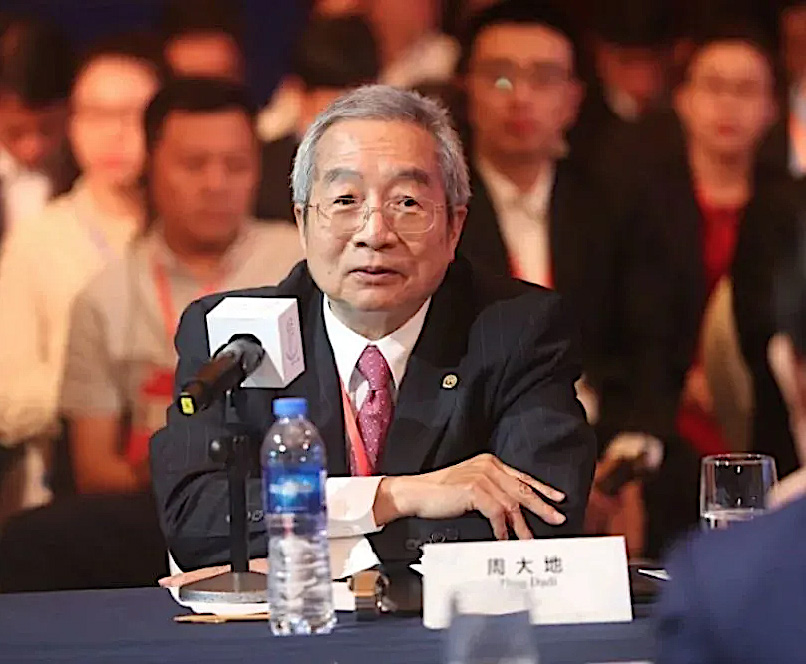
Zhou Dadi 周大地
NDRC Energy Research Institute former chief
Domestic oil and gas resources are meagre, but a heavy reliance on imports risks the PRC’s economic and energy security, argues Zhou. For this reason, China cannot follow the path taken by many Western countries, where their dominant energy sources flip from coal, to gas, then to renewables. Of course, gas will play an important role, but in China’s position, making the switch from coal straight to renewables is the best way forward, says Zhou. In the long run, renewables are the most secure energy source, he asserts.
As far as titans of Chinese energy policy go, there are few bigger than Zhou. Educated at Tsinghua Uni. in the 1980s, Zhou has been the lead author on IPCC (Intergovernmental Panel on Climate Change) reports, a senior consultant to CNOOC and, most recently, the deputy director of the committee tasked with compiling the 14th 5-year plan on energy.
batteries: links with global supply chain
Batteries are irreplaceable in future energy security, both for electric vehicles and for providing power when renewable energy is intermittent. Protectionist policies and the outsized EV market have helped foster PRC giants including CATL and BYD, attracting international leaders like South Korea’s LG to produce locally. CATL has built offshore factories to satisfy EV overseas demand; BYD has flagged similar plans.
Chinese manufacturing is nonetheless heavily dependent on overseas mineral reserves, not least of lithium and cobalt. Where possible, Beijing will seek to dampen risks by diversifying import sources and signing joint ventures abroad. Sizable parts of the global supply chain have been absorbed by PRC players, from cobalt mining in the Democratic Republic of Congo to refineries within China. Difficult risk equations must be balanced: for instance, Australian lithium production is cheap and well-regulated, but courting African or Latin American partners carries less geopolitical hazard.
chart 4: China’s automobile exports, 2012–21
source: China Association of Automobile Manufacturers
Initiated by MEE (Ministry of Ecology and Environment) in 2019, this coalition comprises the environment ministries of 26 BRI (Belt and Road Initiative) countries, plus dozens of research institutes and private sector partners. A platform for cooperation, policy dialogue and information exchange, promoting low carbon energy trade is a large part of the coalition’s mandate.
The Coalition will likely grow in relevance. Xi Jinping’s September 2021 announcement that China would ‘no longer build new overseas coal power plants’ suggests that PRC development banks, previously the world’s number one financiers of overseas coal power plants, will need to pivot away. In March 2022, central guidelines on ‘greening’ the BRI emerged, detailing that China will stop building any and all new coal-fired power projects overseas, but those already under construction may go ahead. Chinese firms may still participate in upgrading projects to enhance plants’ efficiency. Renewables will be the new focus: new policy encourages Chinese clean energy firms to ‘go global’, with wind and solar PV singled out to establish a bunch of ‘best practice’ projects abroad.

Belt & Road Initiative International Green Development Coalition
“一带一路” 绿色发展国际联盟
from local to global
Global carbon neutrality entails more green tech, from hydrogen and CCUS to next-generation batteries and nuclear power plants. The PRC’s heavy investment in R&D and pilot programs endows it with myriad advantages. The new 15-year national hydrogen strategy, issued in late March 2022, is a case in point. Beijing aims for technological breakthroughs in green hydrogen production, storage, distribution and usage. A hydrogen fuel cell vehicle pilot is already underway in cities across China, with billions on the table for tech developers.
Beijing calls on its SOEs, private firms and scholars to maintain a laser focus on phasing in low carbon energy and phasing out fossil fuels, in that order. Market liberalisation measures are being rolled out in sectors from power to natural gas. Vast SOEs like State Grid and PetroChina will be on notice to relinquish their monopoly power and focus on pilot projects, sustained R&D investment and stabilising power supply to ensure a smooth transition.
Global players are not precluded from participating in this energy security drive. Joint research programs with international players on fossil fuel efficiency and renewables are ongoing; countless cases of international industry partnerships are to be found. US, European and East Asian firms have strong presences in the PRC hydrogen industry; many strive to embed themselves locally and even take up leadership roles in cultivating the nascent sector.
green tech factory of the world
The PRC will still look to import Australian fossil fuels in coming decades, above all natural gas, but exporters can plan for a staged reduction in demand as the Chinese energy transition gains momentum.
Opportunities for Australian exports are obvious in the minerals sector: lithium, nickel, copper and rare earths like vanadium will be the building blocks of future clean energy systems.
Australian-developed tech solutions are well-placed to be scaled-up and commercialised in China. Despite some understandable Australian optimism, however, the PRC will be a competitor, not a customer, for Australian green hydrogen.
As with photovoltaics in the 2000s, the PRC ‘world factory’ will enjoy a strong edge in taking technologies developed elsewhere in the world to market. It is also betting heavily on future homegrown innovation, the fruits of which are bound to benefit Australia’s green transition.
Before our very eyes, the tables may turn. As fossil fuel demand wanes, Beijing will move away from its long-resented dependency on energy imports. Australia by then will be a ready, if wary, market for low-cost green tech manufactured at a PRC scale and price.



